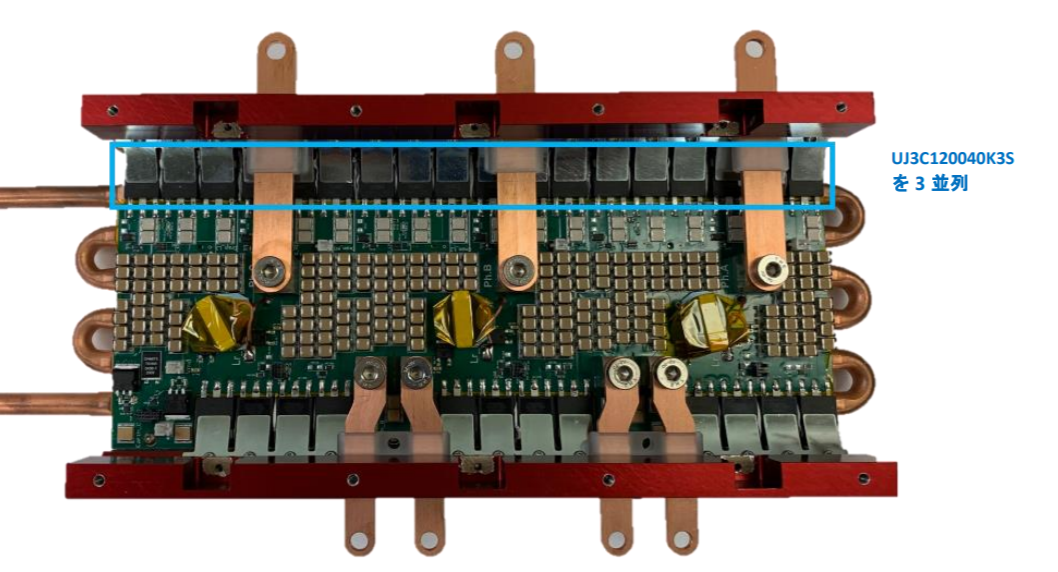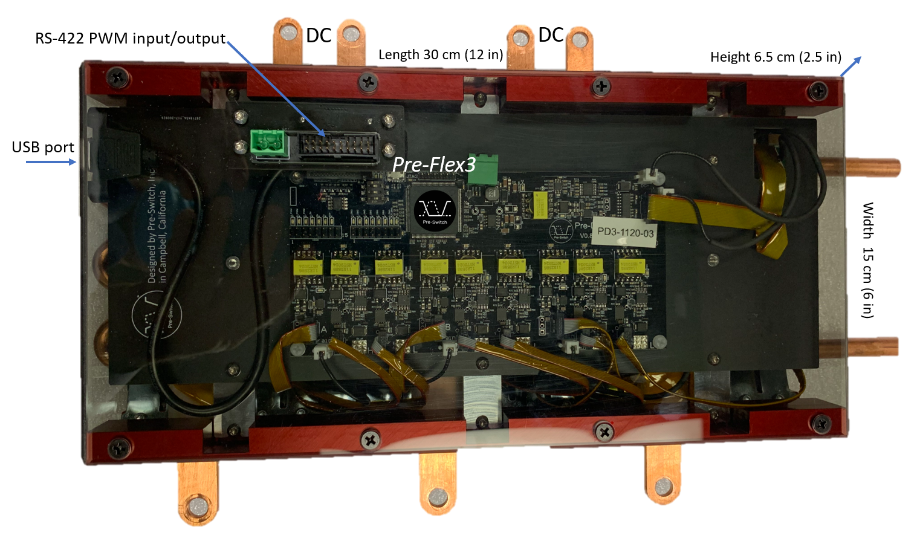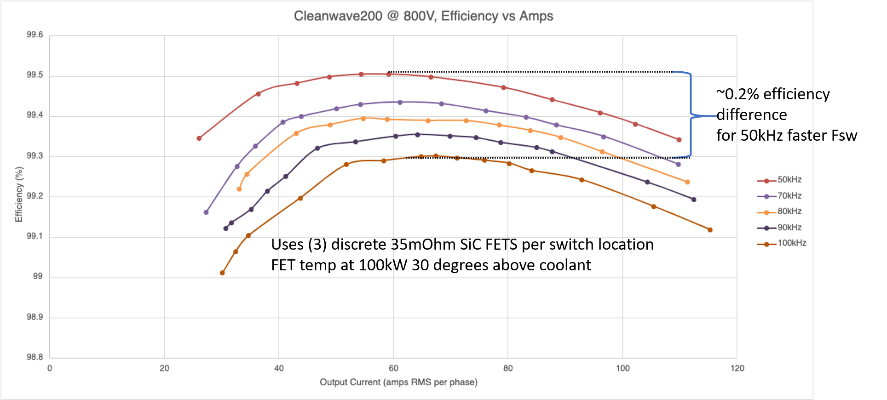Demonstrating the effectiveness of Pre-Switch's solution in high-frequency EV switching
Pre-Switch is a Silicon Valley startup. It focuses on improving EV drivetrain efficiency and reducing costs by lowering dV/dT and improving current sharing at high voltages (500-900V) at higher switching frequencies. The company uses AI to control the resonant tank to ensure soft switching of the system, even with dynamic changes in input voltage, device aging, device temperature, and load.

solution
The newly developed Pre-Switch CleanWave200 is a 200kW, 3-phase, DC/AC power block for evaluating Pre-Switch's soft-switching technology. Using a forced-resonant ARCP circuit with advanced AI control, the system can achieve virtually zero switching losses. This technology enables switching frequencies from 50kHz to 100kHz, providing customers with cleaner sine waves, more efficient motor drives, lower EMI and smaller DC link capacitors. Pre-Switch designed the new CleanWave200 around the UJ3C120040K3S 35mΩ SiC cascode configuration FET after Qorvo provided test samples from the early development process.

merit
Qorvo's cascode FET devices are "good value for money" compared to other competing SiC MOSFETs. Combining Pre-Switch's technology with Qorvo's price/performance advantages provides Pre-Switch's customers with a low-cost solution to reduce the cost of Qorvo devices in automotive evaluation system DC/AC inverter applications. pioneered the usage.
I was able to concentrate and work with less worries
Qorvo's devices have a wide V(GS) input voltage range and high V(GS, th) compared to other competing SiC MOSFETs. This allowed Pre-Switch to focus on core technology and system benefits without worrying about gate drive circuit design.
lower power
The lower Q(g) of Qorvo devices means less power is required to drive the device, especially at 100kHz.
Reduction of dead time loss
During self-resonant edge transitions, dead-time losses may occur due to diode conduction. Competitors' typical SiC MOSFET body diodes have V(f)=3~4V, but UJ3C120040K3S can reduce losses with a much lower V(f)=1.5V.
Efficiency data

Document download
Click the button below to download the PDF version.
Products used in this case study
You can check the products used in this case here.
Inquiry
If you have any questions regarding this article, please contact us below.
Qorvo manufacturer information top page
If you want to return to Qorvo manufacturer information top page, please click below.
